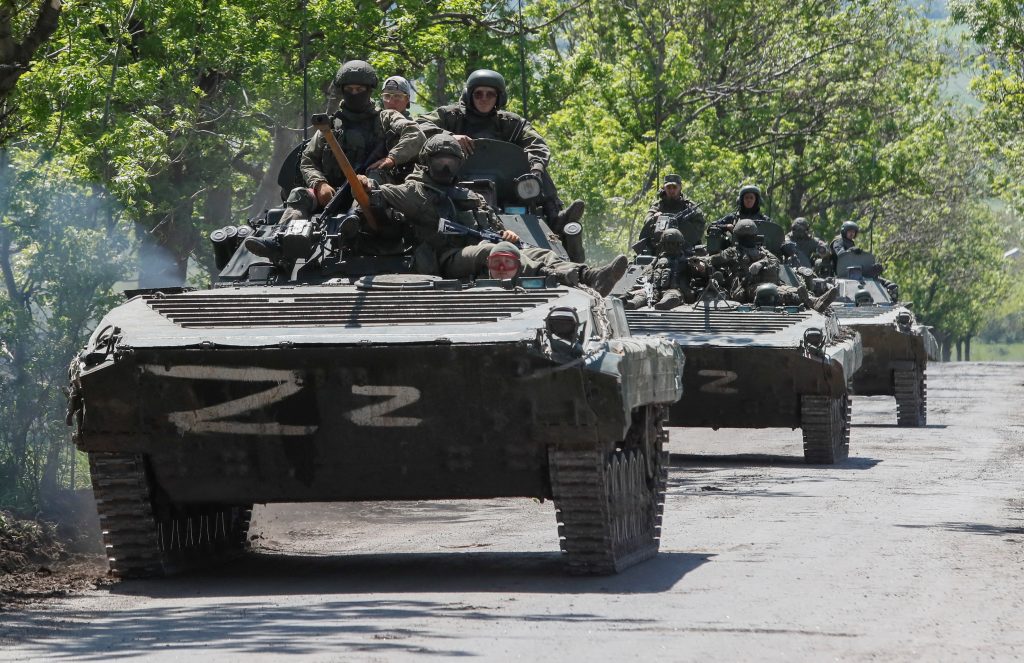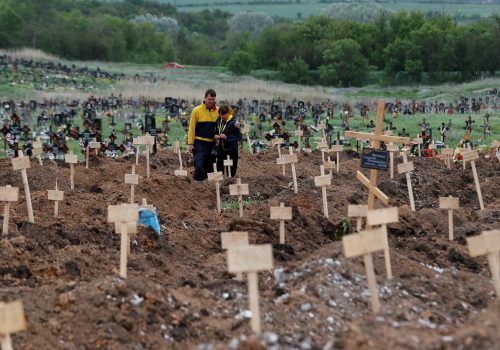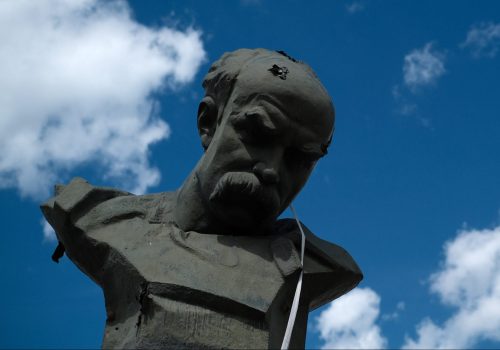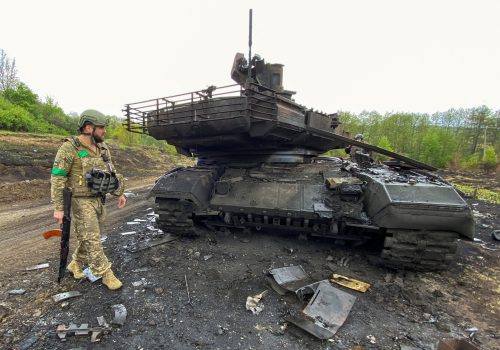The biggest European battles since WWII are currently raging in eastern Ukraine. However, while international attention is firmly focused on the monumental Battle of the Donbas, the ultimate outcome of the Russo-Ukrainian War is likely to be decided hundreds of miles to the south.
When the war first began on February 24, few envisioned such a long or large-scale campaign. On the contrary, the Kremlin anticipated a rapid and comprehensive victory that would bring Ukraine’s Euro-Atlantic integration to a shuddering halt and drag the country back into Russia’s orbit.
Instead, Russia decisively lost the Battle for Kyiv and was forced to retreat entirely from northern Ukraine. Putin responded to defeat in the north by regrouping and concentrating his forces in eastern Ukraine, where Russia continues to advance slowly but steadily while paying a high price in both casualties and military equipment.
Beaten in the north and struggling in the east, Russia’s most significant progress of the campaign so far has come in the south. Large swathes of southern Ukraine were captured during the first days of the invasion and remain in Russian hands. This has enabled Moscow to establish a land bridge connecting the occupied Crimean peninsula with the Russian proxy entities created by the Kremlin in eastern Ukraine eight years ago. Ukrainian troops have succeeded in preventing further Russian offensives towards the key southern port city of Odesa, but Kyiv currently lacks the military forces and heavy military equipment to liberate the regions that have fallen under Russian control.
With Russia seeking to consolidate its hold over occupied areas and Ukrainian forces preparing for a coming counter-offensive, the struggle for southern Ukraine is far from over. The outcome of this confrontation will likely determine whether Vladimir Putin is able to achieve his goal of extinguishing Ukrainian statehood and incorporating large parts of the country into a new Russian Empire.
Stay updated
As the world watches the Russian invasion of Ukraine unfold, UkraineAlert delivers the best Atlantic Council expert insight and analysis on Ukraine twice a week directly to your inbox.
It is vital for Ukraine’s international partners to appreciate that the de-occupation of Ukraine’s southern seaboard is a race against time, with the Kremlin currently taking active steps to incorporate these territories into the Russian Federation. Ukrainian state symbols are being removed from public spaces, the Russian curriculum is being introduced in local schools, and the Ukrainian hryvnia currency is being replaced by the Russian rouble. Ukrainian media, internet services and mobile phone operators have been cut off.
The few local collaborators that have been found are being installed as Russian puppets. Meanwhile, local elected officials, journalists, community leaders and military veterans are being targeted in round-ups and abducted amid growing reports of torture and executions. Tens of thousands from the civilian population have been subjected to forced deportation. In recent days, Putin has unveiled plans to offer Russian passports to residents of southern Ukraine’s Kherson and Zaporizhzhya regions. Meanwhile, senior Kremlin officials have declared that Russia has come “forever.”
The Battle for Southern Ukraine will likely hinge on control of Kherson region, which lies directly north of Crimea. It is no exaggeration to state that Ukraine’s future as a viable independent state may depend on regaining control over this region. For Moscow, the stakes are similarly high. The occupation of Kherson allows Russia to supply fresh water to occupied Crimea and is essential for Putin’s land bridge connecting the peninsula to the Russian border through Berdyansk and Mariupol in south eastern Ukraine.
Kherson region is also a springboard for further anticipated Russian advances along the Black Sea coast toward Odesa. This would enable the Kremlin to cut Ukraine off from the sea and thwart plans to break the current Russian naval blockade of Ukraine’s Black Sea ports. Russian dominance over Ukraine’s south eastern coastline stretching from Crimea to the Russian border has already allowed Moscow to transform the Azov Sea into a Russian lake. Blocking Ukraine’s access to the Black Sea entirely would deal a lethal blow to the export-heavy Ukrainian economy and leave the country with little choice but to accept peace on Moscow’s terms.
In addition to its strategic importance, southern Ukraine also has great symbolic value for Russia. Since the seizure of Crimea and the outbreak of hostilities with Ukraine in spring 2014, Kremlin officials and Russian nationalists have resurrected the half-forgotten Tsarist term “Novorossiya” (“New Russia”) to describe the regions of eastern and southern Ukraine which they seek to annex. Putin has repeatedly accused the early Bolshevik leaders of erroneously granting Soviet Ukraine these southern regions while claiming that the entire area is in fact “ancient Russian land.”
Eurasia Center events

The upcoming battles in southern Ukraine are likely to be the biggest and bloodiest of the war. Ukraine will face Russian troops occupying well-prepared defensive positions who also benefit from the logistical advantages of air support and resupply from nearby Russian-occupied Crimea.
In order to succeed, the Ukrainian military will need to achieve some kind of breathing space in eastern Ukraine that will allow it to concentrate in the south. Another crucial factor will be the timely delivery of heavy weapons from Ukraine’s international partners including long range artillery, attack drones and multiple launch rocket systems (MLRS). Western intelligence will also be vital as Ukraine seeks to repeat the successes it achieved during the first month of the war. Behind the front lines, Ukrainian partisans and Special Forces units will have a significant role to play disrupting Russia’s military movements, destroying vital infrastructure and removing collaborators.
Time is of the essence. While it would be foolish to rush into an offensive as critical to the wider war effort as the liberation of southern Ukraine, it would also be dangerous to wait too long. Russia is clearly in a hurry to annex the region. Many observers expect Moscow to push for annexation in the coming months, possible together with parallel efforts in eastern Ukraine’s Donbas region. This will likely be accompanied by further human rights abuses as the Kremlin looks to secure its position and silence any local opposition.
Unless Russia is forced to retreat from southern Ukraine, all efforts to broker a negotiated peace will prove futile and merely lead to a pause before the next round of hostilities. The region is simply too important and cannot be left under Kremlin control. It holds the key to Putin’s dreams of a new Russian Empire and is at the same time essential for Ukraine’s continued existence as an independent state.
If Ukrainian forces succeed in ending the Russian occupation of the south, they will save their own country while dealing a potentially fatal blow to Moscow’s expansionist agenda. This would be long overdue. More than three decades after the collapse of the USSR, Putin’s Russia remains an unapologetically imperialistic power. The time has come to cast these imperial ambitions on the ash heap of history.
Taras Kuzio is a research fellow at the Henry Jackson Society and Professor of Political Science at the National University of Kyiv Mohyla Academy. He is the author of the recently published book “Russian Nationalism and the Russian-Ukrainian War.”
Further reading
The views expressed in UkraineAlert are solely those of the authors and do not necessarily reflect the views of the Atlantic Council, its staff, or its supporters.

The Eurasia Center’s mission is to enhance transatlantic cooperation in promoting stability, democratic values and prosperity in Eurasia, from Eastern Europe and Turkey in the West to the Caucasus, Russia and Central Asia in the East.
Follow us on social media
and support our work
Image: A convoy of Russian armored vehicles drives along a road in southern Ukraine. May 2022.(REUTERS/Alexander Ermochenko)




